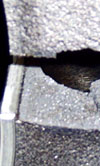Material selection
 If you’ve been in the automotive industry for any length of time you will by now have the words “higher performance, less weight at a cheaper price” more or less burned into the inner soul of your psyche. Since weight is the ultimate destroyer of any performance improvement, it nevertheless rankled if ever we were to reduce the weight of the power unit by some paltry amount someone always managed to find room for yet one more electric motor in the seat! Be that as it may and despite the extra level of driver (or passenger) comfort afforded, the inexorable search for lighter, more powerful engines goes on.
If you’ve been in the automotive industry for any length of time you will by now have the words “higher performance, less weight at a cheaper price” more or less burned into the inner soul of your psyche. Since weight is the ultimate destroyer of any performance improvement, it nevertheless rankled if ever we were to reduce the weight of the power unit by some paltry amount someone always managed to find room for yet one more electric motor in the seat! Be that as it may and despite the extra level of driver (or passenger) comfort afforded, the inexorable search for lighter, more powerful engines goes on.
In any analysis of the weight of an engine, the cylinder block and head will together, and depending upon the material used, account for something around 35 – 40%. It is therefore not surprising that as the rotating and reciprocating parts have been tweaked here and there to remove every last ounce of excess, the great push thereafter is towards the big bits that hold it all together. But weight reduction is not just about selecting cast iron or aluminium alloy; not just about making the cross-section a little bit thinner or reducing the length of the bolts holding the assembly together. The weight reduction exercise can start at any stage from the base design through the material selection right through to the choice of casting processes used.
However selecting the correct grade of metal is just as important as choosing the type. While outlawing cast iron and even some of the newer CGI (compact graphite iron) materials as well as some of the more exotic stuff (for instance magnesium) the only other realistic choice left is that of aluminium.
But there are many grades of cast aluminium and in the selection process there are many factors other than tensile strength of the material that have to be taken into account. Factors such as fatigue strength under cyclic loading, yield strength, ductility and hardness obviously come into it but the ability to retain pressure (in other words porosity) is paramount as well as the fluidity of the molten mixture during casting. Finally the material needs to be readily machined and give a good surface finish if the end product is to be acceptable.
As an example of the evaluation process I have taken three grades of aluminium alloy suitable for casting.
Aluminium alloy 242 T77, a 4%Cu, 2%Ni, 2.5% Mg alloy which, when solution annealed and aged at 350 deg C gives good ductility, hardness and fatigue strength at the expense of tensile strength and fluidity in the molten state;
Aluminium alloy 319 in T5 heated condition, a 6%Si, 3.5%Cu alloy thermally aged at 150 deg C; or
Aluminium alloy A356 T6, a 7% Si, 0.3% Cu alloy with greater strength than either of the above at the expense of ductility / elongation but with superior fluidity and is easily machined.
As a general rule the addition of copper or silicon to the melt reduces the thermal expansion and improves the fluidity during casting but while copper hardens the structure over time (age hardening), silicon improves its abrasion resistance. Small amounts of magnesium or manganese can also improve strength.
Of these three alloys, only A356 satisfies the greater majority of our material requirements of high ultimate tensile and yield stress, suitable hardness and low ductility but with excellent casting fluidity and adequate machinability. Unsuitable ductility can often be compensated in the design process while poor castability, using modern casting software and CAD can sometimes be overcome. And cost, of course, is always a factor!
A356 and is in fact very similar in many ways to the BS 1490 specification LM25 (at 7% Si , 0.1%Cu and 0.4% Mg) used for many years in motorsport and many high quality aluminium castings. This is a version of LM25 in which the iron content is limited to 0.15% and the range of magnesium from 0.20 to 0.45%. While the minimum properties as specified in the standard refers to separately cast test bars it nevertheless becomes very difficult to attain these without very close control of the composition, melt cleaning, degassing and careful temperature control to meet these specifications in the casting.
While the research into new grades of material is ongoing the eventual selection procedure will inevitably be a compromise of properties.
Written by John Coxon.